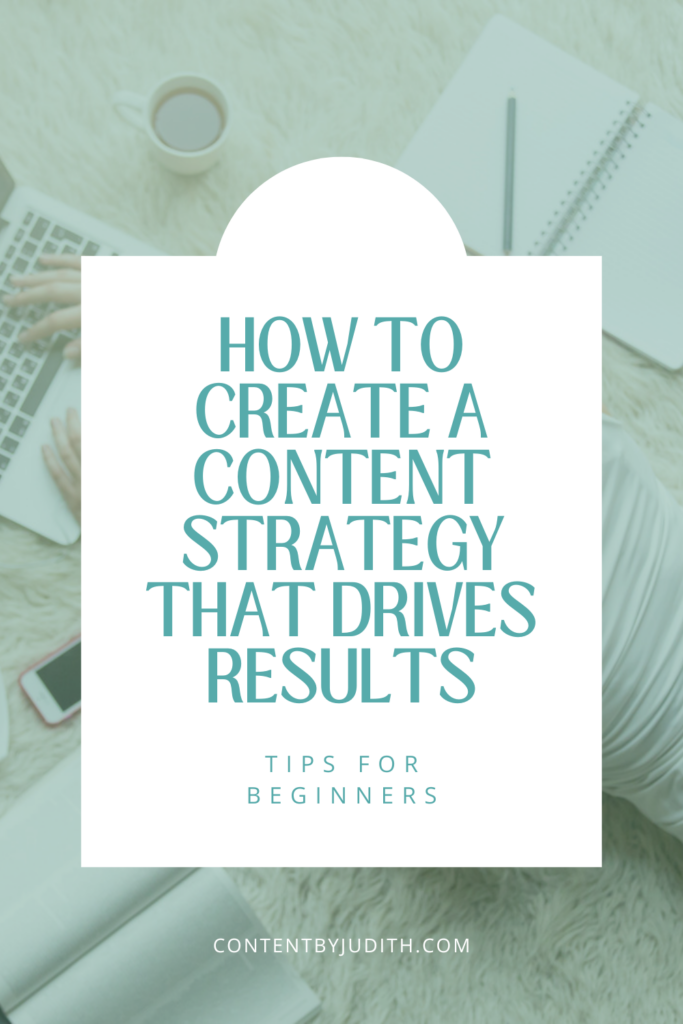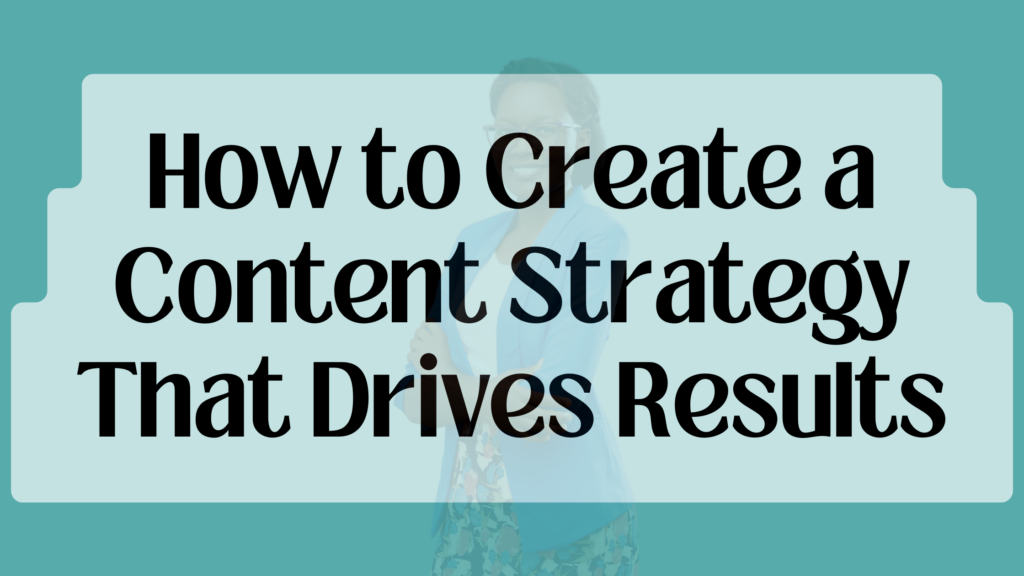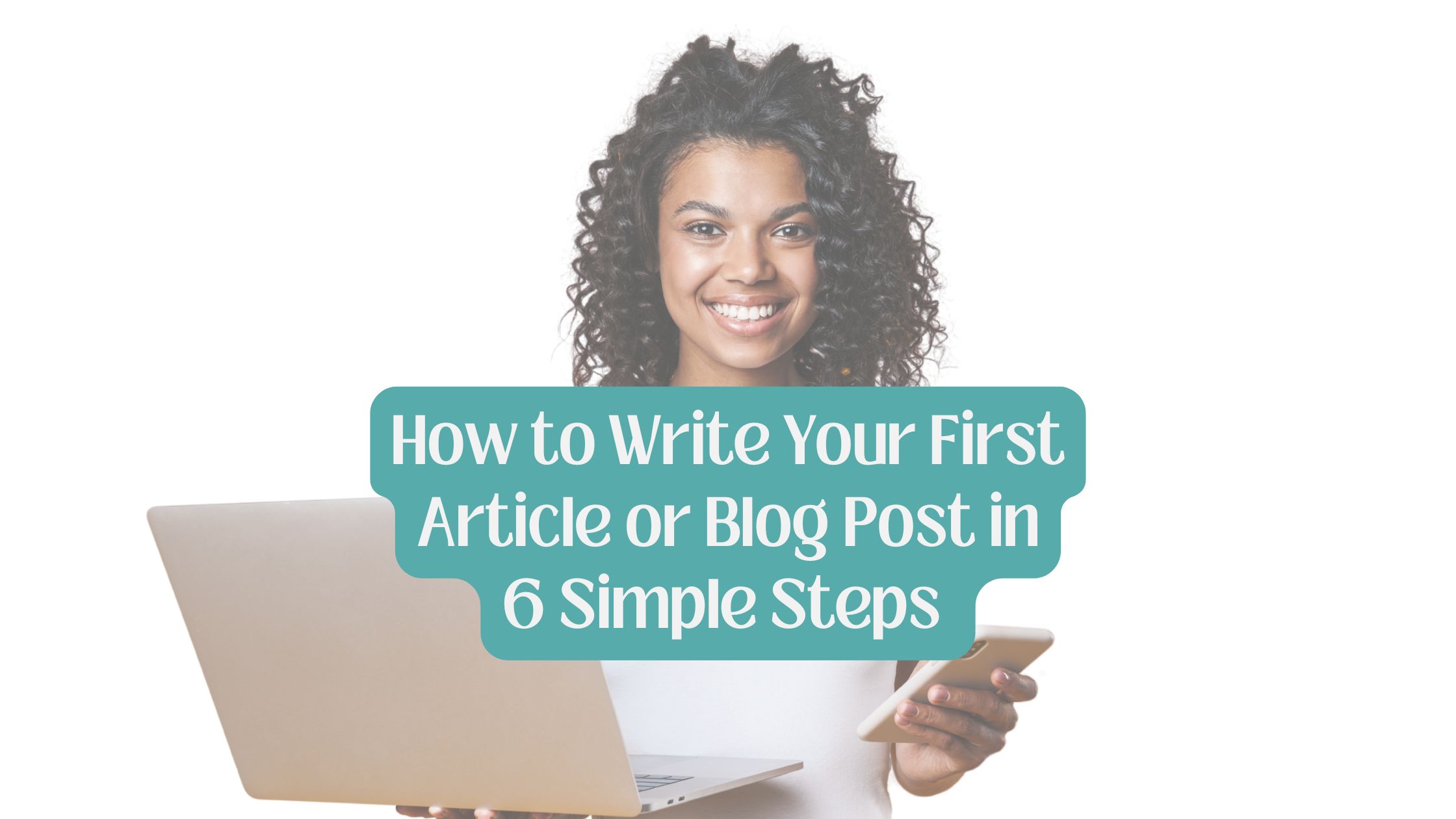Every online marketing effort revolves around a content strategy.
Whether you want to build brand awareness, grow on social media, or increase website traffic, posting content without a plan is frustrating and ineffective.
When I first started creating content, I had no strategy. I was posting randomly and hoping for engagement.
But for days, my LinkedIn posts barely got three impressions. That was early 2024.
Everything changed when I developed a content strategy.
My posts started gaining traction, I received DMs with job offers, collaboration opportunities, and my LinkedIn newsletter articles even helped me land my first client on Upwork.
My online presence became more impactful.

If you want to create a content strategy that attracts the right audience, builds authority, and drives sales, you’re in the right place.
In this guide, I’ll show you how to create a content strategy that delivers results, whether you’re just starting out or refining your approach.
Let’s begin.
What is a Content Strategy?
Great content doesn’t happen by accident. If you want your content to attract the right audience and drive real results, you need a plan.
That’s where a content strategy comes in.
A content strategy is a structured approach to creating, managing, and distributing content in a way that aligns with your business goals.
It ensures that every piece of content, whether it’s a short LinkedIn post, a long-form blog article, a podcast, an email, or a video, serves a purpose and speaks directly to your target audience.
Instead of posting randomly and hoping for engagement, a well-thought-out content strategy helps you:
- Stay consistent with your messaging and publishing schedule
- Attract the right audience and keep them engaged
- Measure what’s working and revisit your approach for better results
Your content strategy can be short-term (e.g. for a month-long campaign) or long-term (e.g. quarterly or yearly), depending on your business goals.
As a freelancer, business coach, or consultant, a content strategy will help you create with intention, avoid burnout, and increase your impact.
Now, let’s break down exactly how to create a winning content strategy in 10 simple steps.

1. Define Your Business Goals to Create a Content Strategy
Every business exists to make money, and your content strategy should directly support that goal.
But before you start creating content, you need to know what you’re trying to achieve at this stage of your business.
Do you want to land your first client?
Attract more customers and grow your client base?
Or are you focused on building brand awareness and positioning yourself as an expert?
Your business goals will determine what kind of content to create, where to distribute it, and who to connect with online.
Without considering all this, you’ll end up posting content that doesn’t align with your growth objectives.
Let’s look at a real-world content strategy example:
Modern Millie is a social media coach and YouTuber who teaches content creators how to grow on social media.
She has a presence on Instagram, TikTok, YouTube, and a website, but her main platform is YouTube.
That’s where she started, built her authority, and monetized her expertise.
Her business goal is to help aspiring content creators achieve success, and she tailors her content strategy accordingly:
- YouTube for in-depth tutorials and education
- Instagram and TikTok for bite-sized, repurposed content
- Blog and Website for long-form, searchable content and lead magnets
Aligning her content strategy with her business goals helps her attract the right audience and turn them into paying clients.
Here’s how this applies to you:
If you’re a freelance writer, LinkedIn and your website may be the best platforms to focus on since many of your potential clients (business owners, CEOs, and marketing teams) are actively looking for content writers on LinkedIn and will appreciate your professionalism on your website.
If you’re a photographer, you might want to focus on Instagram, TikTok, and Pinterest, where visual content performs best and attracts potential clients.
When you define your goals first, your content has a purpose, and you attract the right audience to grow your business.
2. Understand Your Target Audience to Create a Winning Content Strategy
If you don’t understand your audience’s needs, frustrations, and desires, your content won’t connect, no matter how frequently you post.
A successful content strategy starts with knowing exactly who you’re talking to and what they care about.
If you’re unsure who your target audience is, here’s a quick way to figure it out:
Use ChatGPT.
Give it details about your business, who you serve, and how you help them.
Then ask:
- Who would be interested in my offer?
- What are their biggest frustrations?
- What kind of content would they find most valuable?
- Where do they hang out online?
This will give you a starting point to tailor your content to their specific needs and avoid creating content that just fills up space.
Another great way to figure out who your target audience is, is to talk to your yesterday self. The person you were before you learned what you know now.
Many businesses are built around solving a problem the founder once had.
Think about it, why did you start doing what you do?
Maybe you became a freelance writer because you struggled to find a career path that allowed flexibility and creativity.
Or you started a coaching business because you wished you had a mentor when you were starting out.
The struggles you faced, the mistakes you made, and the lessons you learned will resonate with others on the same path.
As you post content, pay attention to your comments and DMs. What questions are people asking? What topics get the most engagement?
Your audience will tell you what they need, if you listen.
Tweak your content strategy based on their feedback to stay relevant and valuable.
When you truly understand your audience, you can create content that attracts the right people, builds trust, and converts followers into clients.
Instead of just putting out random posts, you’ll create content that speaks directly to the people who need your help the most.
3. Know Your Competition
Your competitors can teach you a lot about what works and what gaps you can fill.
Studying their content strategy will help you refine your own approach and position yourself in a unique way in your industry.
Your competitors have already tested different content strategies, figured out what works, and built an audience.
Instead of starting from scratch, learn from their successes and mistakes.
Spot any content gaps (areas they’re neglecting) that you can cover.
See what type of content gets the most engagement.
Understand audience expectations and find a unique angle that makes your content stand out.
Look at influencers, top-performing brands, and freelancers or coaches offering similar services.
Pay attention to the platforms they use, topics they post about, how often they publish content, and what type of content performs best (videos, text posts, carousels, or blogs).
Check their comments section to see what questions people are asking and spot the unanswered questions. These are potential topics you can cover.
You can even go ahead and join their email list if they have one to see what kind of content they send their subscribers.
Observe their tone, offers, and messaging style.
Analyze their monetization strategy and check how they transition their audience from free content to paid services.
The most important thing to remember here is AVOID copying. Just look for ways to add your unique insights and personality to your content.
If a certain content format performs well for them, try it in your own style.
4. Define Your Tone and Language
Your tone and language influences the way your audience perceives you.
So as you create your content strategy, you need to decide how you want to sound in your content:
- Professional? (Great for B2B brands)
- Approachable? (Great for coaches, lifestyle brands, and solopreneurs)
- Authoritative and insightful? (Best for B2B brands, consultants, and industry experts)
- Conversational and playful? (Ideal for personal brands)
Having a well-defined and consistent tone builds trust, strengthens your brand identity, and helps you connect with the right audience.
It also helps you stand out in the crowd.
The only chance at being original these days is to share your personal experiences authentically.
You can be sure no one has experienced life the exact same way you have, and that’s your competitive advantage.
Leverage that to build a solid content strategy that helps you attract the right audience and opportunities.
Here’s an example of three different tones in action using our current topic of creating a content strategy:
- Casual and friendly: Hey there! Struggling to create content that actually gets engagement? Let’s fix that.
- Professional and authoritative: A strong content strategy is the key to increasing brand visibility and driving conversions.
- Inspirational and motivational: You have a message the world needs to hear. Let’s craft content that makes an impact.
To check if your content is true to your preferred tone, read your content out loud before publishing.
Would your ideal reader relate to it? If not, change it up until it feels right.
5. Choose the Right Platform Based on Your Goals
Having a presence on multiple platforms is the way digital marketing is done these days.
It’s important for expanding your reach and creating several touchpoints for potential customers to engage with your brand.
But trying to be everywhere at once can be overwhelming, especially when you’re just starting out.
So instead of spreading yourself too thin, focus on one platform that aligns with your goals and audience.
As your brand grows, you can gradually expand to other platforms that make sense for your business.
For a B2B (Business to Business) content strategy, you can have LinkedIn and your website as your primary channels of promoting content in a way that positions you as an authority.
And if you’re targeting a B2C (Business to Consumer) audience, platforms like Facebook, Instagram, and TikTok can help you engage with customers in a more personal and interactive way.
Take the time to identify where your audience spends the most time and incorporate those platforms into your content strategy.
It’ll help your efforts drive meaningful results rather than just adding to the noise.
6. Create a Content Calendar and Publish Consistently
The worst content strategy is posting only when an idea strikes.
Without a plan, you risk:
- Posting inconsistently
- Lacking direction
- Struggling to come up with ideas on demand
Batch your content ideas ahead of time instead, and make sure you channel your ideas through your content strategy to keep yourself on track.
This doesn’t mean you need to write all your content in advance, but having a clear roadmap makes execution easier.
Set aside time each week or month to brainstorm and plan your content calendar to achieve the goals you’ve set.
I personally do this weekly and ensure I have a good mix of personal stories, client success stories, and educational content.
I find it hard to plan too far out in advance and so far, weekly planning has been working well for me.
Find out what works well for you too and stick to it.
Remember, content marketing is a long-term goal so be realistic and see that each piece of content is working for you.
7. Adapt Your Content Strategy to Different Business Seasons
Your content strategy should change as your business grows and your goals shift.
What worked six months ago may not be as effective today.
Your audience’s needs are likely changing too.
To stay relevant and impactful, adapt your content strategy based on the current stage of your business:
- If you’re launching a new offer, focus on content that builds anticipation and awareness.
- Attracting more clients? Share authority-building posts, client testimonials, and case studies.
- And if you’re scaling your business, shift towards thought leadership, strategic collaborations, and brand positioning.
A rigid content strategy can hold you back.
Be flexible, track your progress, and adjust as needed.
Review your content strategy every quarter or six months to make sure it aligns with your changing business goals.
8. Measure Your Results (So You Know What’s Working)
Not all content drives results. That’s why tracking your analytics is crucial.
Regularly check:
- If your posts are getting likes, comments, and shares
- If people are reaching out with questions or expressing interest
- If your content is leading to sales, sign-ups, or other desired actions
- Which content types are the most impactful
- If something worked well and how you can repeat that success.
If your content isn’t driving sales, social shares, audience engagement, or lead generation, don’t be afraid to pivot.
Experiment with new formats, stronger calls to action (CTAs), or better messaging.
That’s why defining your key performance indicators is important when creating your content strategy.
You measure your results against your KPIs to know what’s working and what’s not.
To stay consistent with tracking, set aside 30 minutes each week to review your analytics and adjust your content strategy accordingly.
9. Listen to Your Customers and Adjust as Needed
Pay attention to your comments section, messages, and feedback. What are people saying or what questions are they asking?
If people frequently ask about a certain topic, create content that answers their questions.
If they suggest something new that aligns with your business, consider incorporating it.
Your content strategy should be flexible and allow you to adapt based on real-world demand rather than sticking rigidly to your initial plan.
Many businesses are successful because they listen to their customers. Be one of them.
For example, if you started out as a freelance writer but receive frequent requests to teach people how to write better, explore coaching and see where it takes you.
And if you’re a coach and get invitations to share your knowledge on stage, consider adding public speaking to your brand.
A great content strategy helps you build a strong online presence that attracts opportunities that may not have been in the original plan.
Be ready for the expected and unexpected achievements!
10. Engage With Others for Wider Reach
One of the biggest mistakes in content marketing is only posting without engaging.
If you’re just publishing content without interacting, you’re missing out on more visibility, stronger relationships, and a higher chance of attracting clients and collaborators.
Dedicate at least 15 minutes a day to engaging with posts in your industry, from peers, industry leaders, and potential clients.
Comment with meaningful insights and respond to comments and DMs on your posts.
People want to feel heard, and when you reply to their comments and messages, you build trust and loyalty.
Networking is just as important as creating content.
On platforms like LinkedIn, your comments act as mini-advertisements.
Each time you leave a valuable comment, new people notice you, which can lead to profile views, connections, and potential business opportunities, especially when you’ve optimized your profile for the opportunities you intend to attract.
It’s Time to Create a Content Strategy That Works For You
Content marketing goes beyond writing great posts or editing great videos. Without a clear strategy, even the best content can go unnoticed.
After writing over 200 B2B LinkedIn posts for multiple accounts and over 100 B2C Facebook posts, I’ve seen firsthand how a well-structured content strategy can attract opportunities, build authority, and drive real business results.
A strong content strategy is about being intentional, aligning your content with your goals, reaching the right audience, and continuously refining your approach to achieve desired results.
Define your KPIs, schedule your content, mix up different formats, and use the right automation tools to stay ahead.
It takes a bit of time to nail your content strategy, so don’t put pressure on yourself to get it right at once.
Choose one of these steps at a time and take action until you’re satisfied.
And if you need a done-for-you content strategy and content creation, I can help.
Get in touch with me here to develop a content strategy that drives results for your business.
*******
Want to start freelance writing but feel struck despite consuming all the information on YouTube? My free guide, The Blueprint to Start Freelance Writing in 3 Months (With No Experience), gives you a step-by-step roadmap to go from complete beginner to landing your first paid writing job.




2 Responses